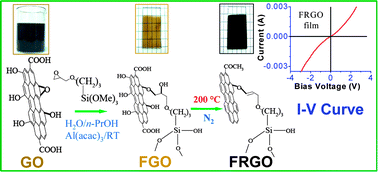Covalently functionalized reduced graphene oxide by organically modified silica: a facile synthesis of electrically conducting black coatings on glass†
Abstract
The fabrication of black and electrically conducting films on glass substrate derived from covalently functionalized reduced graphene oxide (FRGO) has been reported in this work. Graphene


 Please wait while we load your content...
Please wait while we load your content...